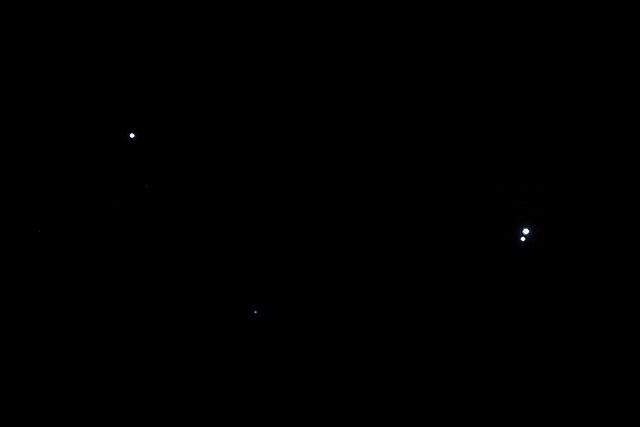Mizar is a second-magnitude star in the handle of the Big Dipper asterism in the constellation of Ursa Major. It has the Bayer designation ζ Ursae Majoris. It forms a well-known naked eye double star with the fainter star Alcor, and is itself a quadruple star system. The Mizar and Alcor system lies about 83 light-years away from the Sun, as measured by the Hipparcos astrometry satellite, and is part of the Ursa Major Moving Group.
The Big Dipper's bowl and part of the handle photographed from the International Space Station. Mizar and Alcor are at the upper right.
The multiple star system of Mizar (the double star on the right) and Alcor (left). The unrelated, fainter star Sidus Ludovicianum can be seen lower down.
The Big Dipper or the plough is a large asterism consisting of seven bright stars of the constellation Ursa Major; six of them are of second magnitude and one, Megrez (δ), of third magnitude. Four define a "bowl" or "body" and three define a "handle" or "head". It is recognized as a distinct grouping in many cultures. The North Star (Polaris), the current northern pole star and the tip of the handle of the Little Dipper, can be located by extending an imaginary line through the front two stars of the asterism, Merak (β) and Dubhe (α). This makes it useful in celestial navigation.
The Big Dipper seen from Fujian
The Hall of the Big Dipper in a Taoist temple, Wuhan
The Big Dipper's bowl and part of the handle photographed from the International Space Station. Mizar and Alcor are at the upper right.
The Big Dipper (Ursa Major) photographed by Prof. Chen Hualin in Dakawa, Morogoro, Tanzania at midnight on February 16, 2018





